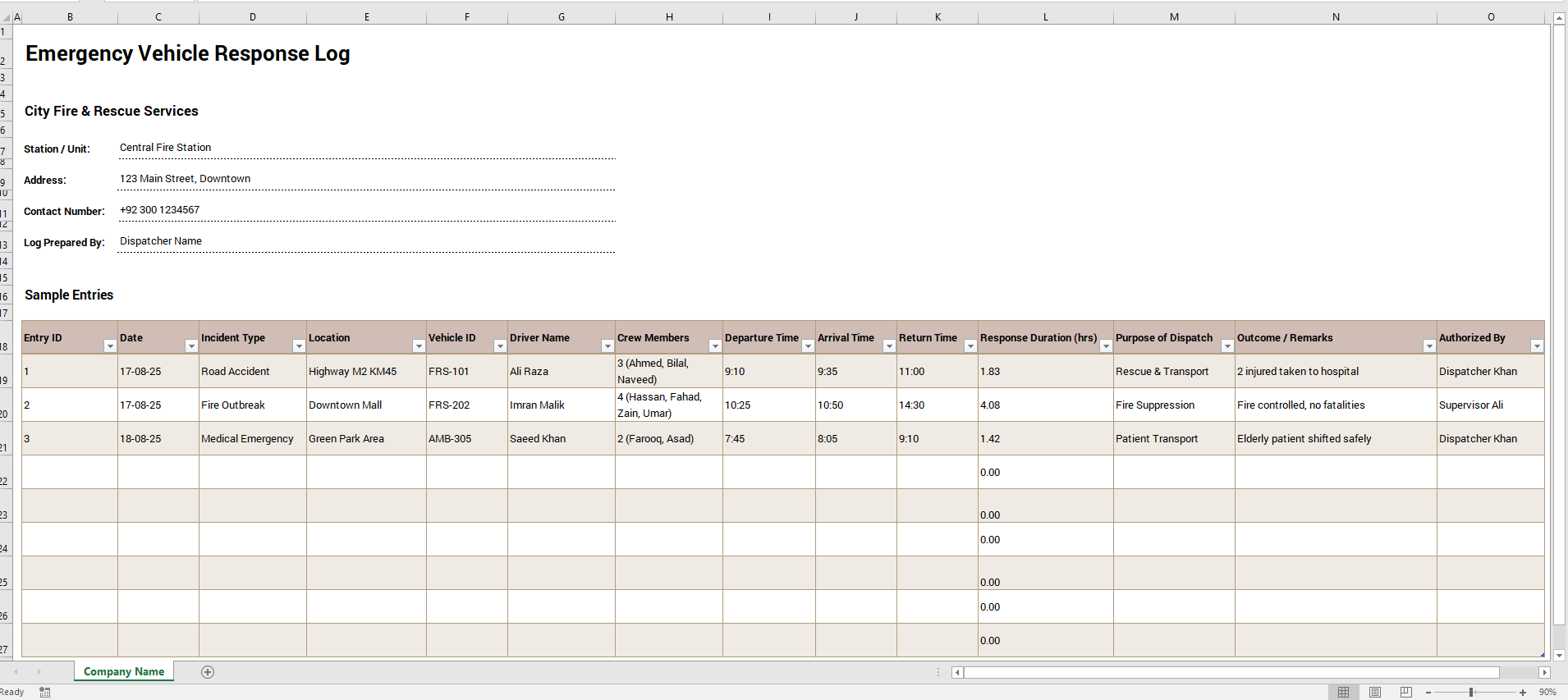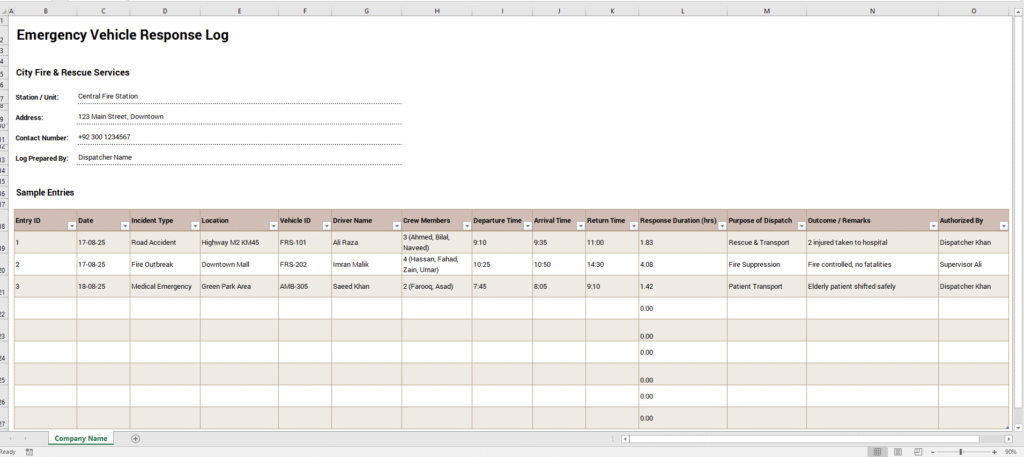Emergency vehicle response is crucial and must be managed carefully to prevent an incident from escalating further. These vehicles include ambulances, fire trucks, police cars, and others that are deployed to the scene of an emergency.
An emergency vehicle response log is essential for managing situations such as accidents, medical crises, and other urgent incidents that require immediate assistance. It helps ensure that vehicles and emergency responses are handled efficiently and effectively.
What is an Emergency Vehicle Response Log?
This document records the dispatch of emergency vehicles. It tracks which vehicles have been dispatched. time of dispatch, and includes details about the specific emergency.
The emergency log is important as it records essential details during an emergency, such as which emergency vehicle was deployed and the destination it was sent to. An organization can track which vehicles have been deployed and which ones are still available. This helps the emergency response team analyze whether additional vehicles are needed to handle the situation effectively.
Emergency Vehicle Log Overview
The log records essential details about each emergency and when it occurred. It includes the date and time the emergency vehicle was dispatched, along with specific information about the vehicle. The incident details are also documented, and the status of the vehicle and its response is noted for reference.
Advantages of Emergency Vehicle Response Log
The following are some advantages of an emergency vehicle response log:
- The log mentions what emergency vehicle was dispatched and at what time.
- It includes details about the incident and the response provided.
- The log serves as documented proof of the emergency response and helps organizations evaluate how emergencies were handled, enabling them to improve future response strategies.
How to make an Emergency Vehicle Response Log?
An emergency vehicle response log should be made so that only the important details are included. The following points can help one make an emergency vehicle response log:
Details to add:
The log should have a professional format and include a clear heading, such as “Emergency Vehicle Response Log”. It must specify the relevant time frame for which the log applies. Additionally, the name and contact information of the company should be mentioned for proper identification and record-keeping.
Essential Columns in the Log:
The table should include a Date and Time column to record when the vehicle was dispatched. A Vehicle Details column should specify which vehicle was used, along with its make and model. A Nature of Emergency column can record the type of incident. Additionally, details of the Requesting Person, including their name and contact information, should be documented. Finally, the Outcome of the Emergency Response and Current Status should also be recorded for proper tracking and accountability.
Tips for Creating a Professional Log
The following tips can help when preparing an emergency vehicle response log:
- Choose the Application: Create the log professionally using applications like Microsoft Word or Excel. You can design a table and include the necessary fields to ensure the document looks clear and well-structured.
- Include Relevant Details Only: Make sure the log records essential information related to emergency vehicle responses. This keeps the log simple, easy to fill out, and free from unnecessary or confusing details.
Importance of the Log
Emergency response must be managed quickly and efficiently to ensure that incidents are controlled properly. Emergency vehicles also need to be maintained in a reliable working condition so they can perform effectively during critical situations.
This is where an emergency vehicle response log can be useful. When maintained carefully, it allows for better management of emergencies by providing clear records of which vehicles have been dispatched and which ones remain available for use if needed.
- Emergency Vehicle Response Log
- Vendor Entry Log Template
- Salary-Based Incentive Tracker Template
- Payscale Structure Sheet Template
- Salary Arrears Calculation Sheet
- Payroll Summary Report Sheet
- Remote Work Salary Adjustment Log
- Employee Salary History Record Sheet
- Post-Trip Purchase Summary Sheet
- Motor Pool Reservation Log
- Logistics Dispatch Sheet Template
- Daily Entry Summary Sheet
- Entry Badge Issuance Record Sheet
- Guest Entry Register Template
- Shopping & Souvenir List Template

